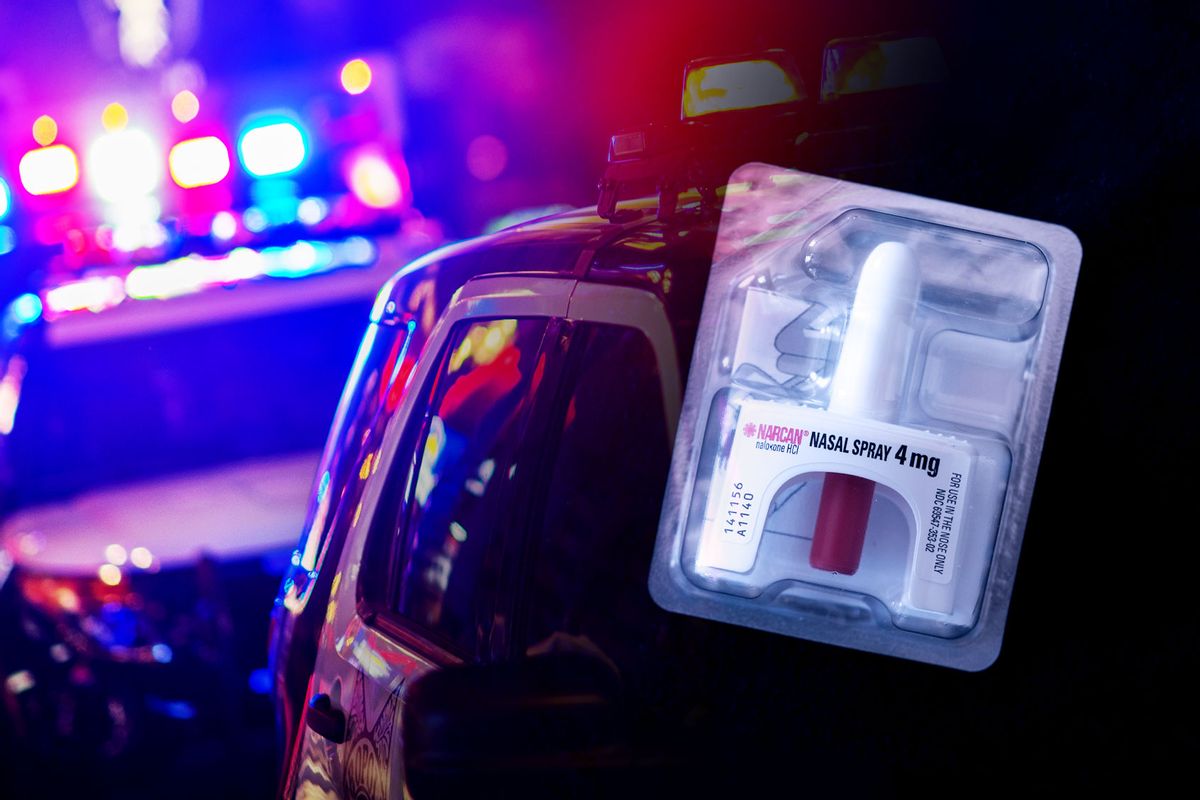Since 1999, nearly one million Americans have died from a drug overdose, with a majority of those deaths driven by synthetic opioids. Indeed, for two decades, the burden of the overdose crisis has yet to ease despite enduring harm reduction tactics and prosecutors going after drug dealers in attempts to hold someone criminally accountable. A new study published earlier this month in the American Journal of Public Health potentially highlights a chilling unintended consequence of what happens when police seize opioids with the intent to curb use: opioid overdoses don't fall — they rise.
"I particularly feel so deeply for families who, in their grief, are told that this type of criminalization — charging someone with a murder for their loved one's death — will prevent this from happening to someone else," Dr. Jennifer Carroll, a medical anthropologist, an assistant professor of anthropology at North Carolina State University, and co-author of the study, told Salon. "When in fact, they [law enforcement] might be directly causing it to happen to someone else, and I think that's a particularly awful thing to do with genuine and heartfelt grief."
Carroll and many of her colleagues have been involved in the drug policy and public health harm reduction world for a while, and many of them — Carroll included — kept hearing a peculiar anecdotal trend that overdoses increased in the wake of a drug bust. For example, she had an EMT tell her that when a big drug bust was happening, first responders would double stock their ambulances with naloxone. At last, Carroll and her co-authors had an opportunity to see if this anecdotal narrative checked out statistically.
Together, the researchers looked at multiple pieces of data in Marion County, with a population of nearly 1 million: overdose fatalities, non-fatal overdoses, naloxone given by emergency medical services and drug seizures. They identified "2110 opioid-related and 3039 stimulant-related drug seizures during the 24-month study period, representing an average of 7.0 drug seizures per day."
The researchers were able to obtain property room data from the Indianapolis Municipal Police Department, which gave researchers the date, time and location of drug seizures. By ruling out seizures that were irrelevant to their study — for example marijuana-only seizures or ones that happened at the airport — they were able to see how the number of naloxone administration and overdoses trended afterwards.
Using the Knox test statistic, which is a widely used statistical test for space-time interaction among a set of events, the researchers identified that the number of fatal overdoses doubled within 500 meters of the seizure site following opioid seizures. Between one and three weeks, the researchers saw a statistically significant increase in overdoses. As to why this might be happening, researchers believe it likely has to do with an interruption in use and tolerance.
"This is consistent with our hypothesized mechanism," Carroll and her co-authors report, "because persons with opioid use disorder who lose their supply will experience both diminishing tolerance and withdrawal, whereby even the anticipation of painful symptoms may lead them to seek a new supply while discounting risks that stem from the differences in potency inherent in an illicit opioid market; this results in unknown tolerance, uncertainty about a safe dose, and increased overdose risk."
"Criminalized drug policies do not do much to prevent overdose"
While the study was an observational one, meaning that the researchers can't conclude a direct causal relationship, the association between drug seizures and an uptick in overdose deaths is notable, which "adds to a growing body of literature that suggests drug criminalization and supply-side interdiction might produce more public harm than public good," the authors wrote.
"If someone steals your lunch money and you don't have any friends, you might not be eating lunch that day," Carroll said. "It is possible that people were kind of going without and going through withdrawals for a couple days and then when they get product again, they can overdose because their tolerance has gone down."
Want more health and science stories in your inbox? Subscribe to Salon's weekly newsletter The Vulgar Scientist.
It is also possible that following an opioid seizure, people are seeking drugs from other suppliers who might be selling opioids, stimulants or other substances contaminated with illicit fentanyl or animal tranquilizers like xylazine.
"There is also a risk for people who knowingly use stimulants but are opioid naïve and, thus, have lower opioid tolerance," the researchers concluded. "They might seek a new supplier following a drug market disruption and then overdose from fentanyl-contaminated stimulants."
The study, which was funded by the Centers for Disease Control and Prevention (CDC), is gaining traction in public health circles. In an editorial drug scientist Dr. Nabarun Dasgupta wrote that this study adds to "growing scientific evidence" supporting "what many on the street already know," which is "the narrow mission of law enforcement may exacerbate drug harms."
When asked what police departments across the U.S. should take away from their study, Carroll said it's a "hard question" to answer, but it does contribute to a paradigm shift in the way law enforcement approaches the opioid crisis.
"Criminalized drug policies do not do much to prevent overdose or [lessen] the drug supply," Carroll said. "We know that criminalization is, in many ways, causing overdose deaths. So we've had proof of concept that arrest, especially arresting suppliers, puts their clients at immediate risk of overdose death."
Carroll said she has interviews with law enforcement officers who themselves confess they aren't making "a dent" in the crisis. Carroll added the solution, and how police departments move forward, "requires a lot of community discussion and a lot of reflection."



Shares